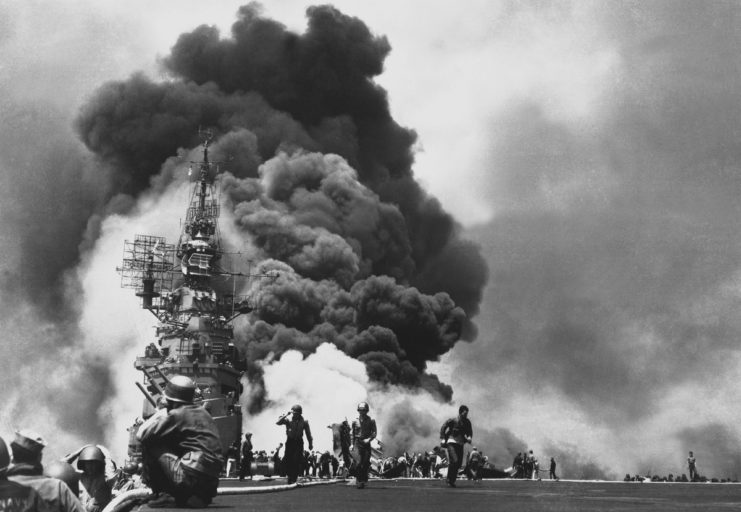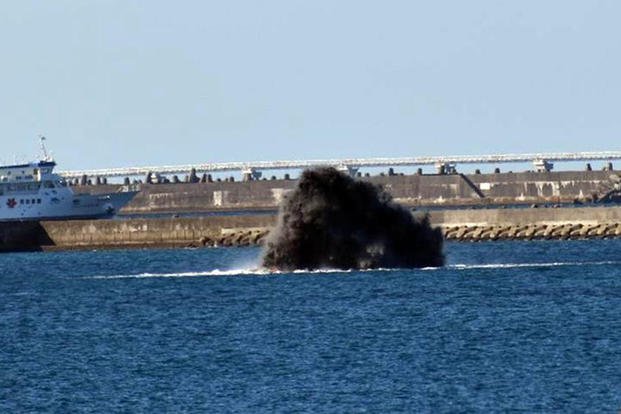After the discovery of hundreds of WWII munitions this year leftover from the Battle of Okinawa, the Japan Maritime Self-Defense Force has begun to destroy them. The uncovered ordnance is now in the process of being destroyed, with over 600 in total due to be dealt with.
319 pieces of ordnance were detonated at 10:15 am on December 14, 2021. This particular haul contained bullets and grenades and was detonated underwater around 800 meters from the shores of Okinawa.
The ordnance is believed to have come from the Battle of Okinawa, which was one of the most vicious and bloody battles of the entire war. It was discovered during dredging and was probably from the American’s presence on the island at the time. This is unsurprising, considering the opening stages of the battle were host to the largest amphibious invasion ever in the Pacific Theater.
A Naha city spokesman said the haul was the largest they had found in one go since the 1990s. They also said that “The disposal was conducted as planned and without any trouble,” thankfully.
There are still over 300 items that need to be disposed of, and this will take place on January 26, 2022.
The recovery of unexploded ordnance is a lethal issue that still plagues Okinawa, and most locations the US and Japan fought on.
Battle of Okinawa

The Battle of Okinawa started on the 1st of April 1945 with an enormous amphibious invasion from the sea. The previous month, the islands surrounding Okinawa were captured preemptively. Over half a million American troops were involved in the battle and faced off against a Japanese-led force of less than 100,000. As the battle took place on an island, the Japanese were unable, and in many cases, unwilling to retreat.
As a result, almost 80,000 Japanese troops were killed. The Japanese used the local Okinawan population for their own uses, forcing them to fight, tend to the wounded, and in some cases serving as human shields. In addition, the Japanese spread misinformation to the locals about the brutality of the US, and that if they were captured they’d experience extreme cruelty. Therefore many Okinawans chose suicide.
In total, around 150,000 Okinawans were killed either in battle or via other means like suicide. This is about half of the pre-war population of 300,000.
The fanatical nature in which the Japanese fought was terrifying. Some historians believe the Battle of Okinawa to be pivotal in the United States’ decision to use atomic weapons, as it was a sign of things to come in an invasion of the Japanese mainland.
The island was returned to Japan in 1972, and since then over 2,000 tons of unexploded ordnance have been discovered and disposed of. Things are looking up though, as a spokesman from Okinawa’s Disaster Prevention and Crisis Management Division said that “the number of unexploded ordnance found in Okinawa is decreasing.” Just 14.5 tons of ordnance were disposed of last year.
